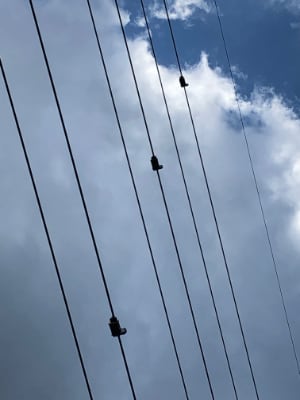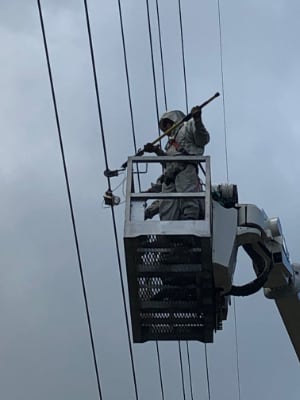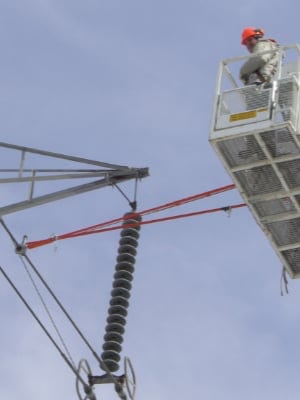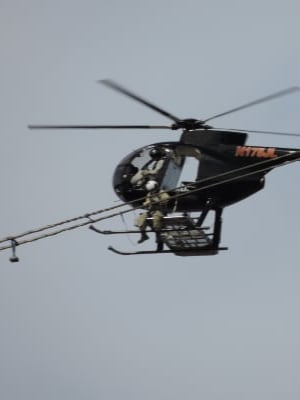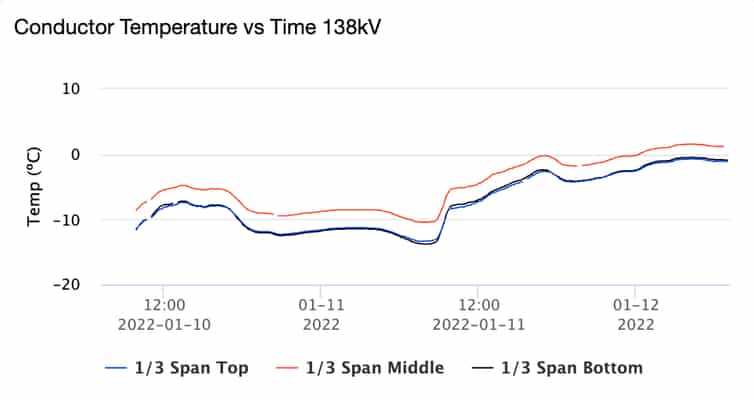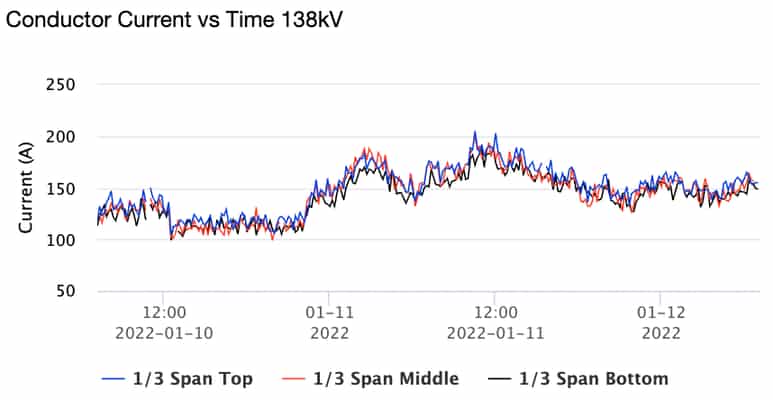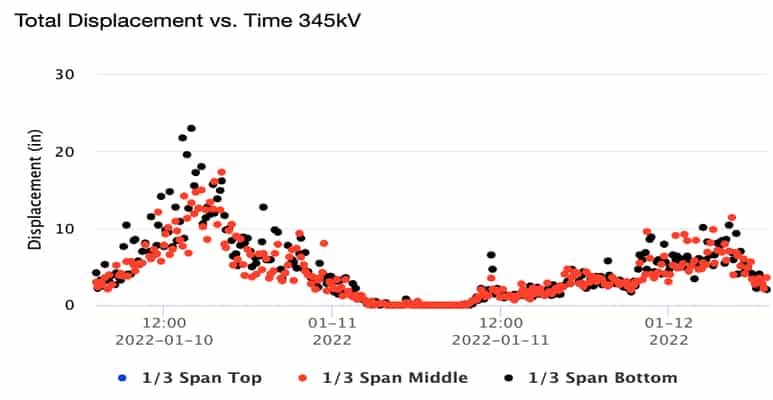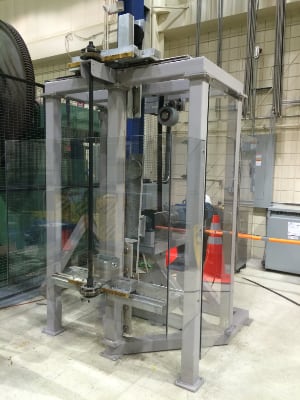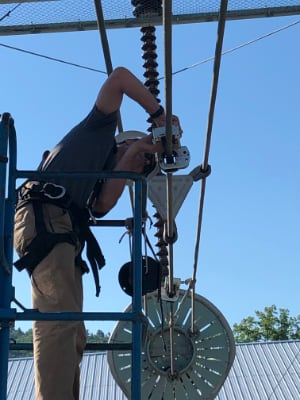EPRI Overhead Conductor Monitor
EPRI Conductor RF Monitors address a range of applications including ratings, aeolian vibration, conductor galloping and blowout. The robust, low-cost RF Monitors measure a range of parameters which are used by integrated algorithms to calculate conductor motion and rating metrics.
We designed these self-contained units to wirelessly report measurement data and status via a radio frequency (RF) link to a base station where the data is captured with a data logger for near real-time transfer to a server where it is visible from a web portal.
Our measurement approach
We designed our Conductor RF Monitors to have the following measurement features:
- Conductor temperature is measured using a patented thermocouple design that reduces heatsinking effects in order to increase accuracy.
- Current flowing through the conductor is measured by coupling with the magnetic field.
- A 3D accelerometer and 3D gyroscope measure acceleration and rotational velocity in a total of six axes using a solid-state MEMS (micro-electro- mechanical system) device.
- Algorithms integrated into the sensor use the accelerations and rotational velocities to calculate conductor motion metrics including displacement and dominant frequencies.
- On-board monitoring parameters can be remotely changed over a secure link to adjust for the frequency and type of conductor motion, as well as the measurement interval.
- On request the monitors can provide raw acceleration data enabling more detailed investigations during events.
- Power-harvesting from the magnetic field is used to power the sensors with integrated energy storage which enables sensors to operate up to 2 months with no current flowing in the line *(when fully charged at time of power loss).
- Algorithms automatically reduce rate of measurement and RF transmission as stored energy reduces due to reduction in line current.
- Sensor health parameters are reported and alarmed on.
Energized installation
Our Conductor RF Monitors can be installed under live working conditions using hotsticks or barehand techniques. Installations have been performed using both methods up to 345kV.
Conductor RF Sensors are field adjustable to be installed on conductors and splices with diameters from 0.75” (19 mm) to 2.50” (64mm). Conductor diameters outside of this range may be addressed with sensor modification prior to installation.
Algorithms and advanced analytics
Algorithms and analytics are needed to convert conductor temperature, sag and motion data into actionable information.
Advanced performance testing
Our Conductor RF Monitors have been comprehensively tested to evaluate their ability to measure and withstand a range of conditions including:
- Environmental Testing – Temperature and Humidity
- Electrical Testing – Corona free up to 500kV (3 conductor bundle), 2000A AC current, Lightning Surge Current.
- Conductor Temperature Accuracy Testing – Conducted over a range of windspeeds.
- Galloping Accuracy Testing - Using custom EPRI developed galloping machine to simulate 2D elliptical path.
- Aeolian Vibration Accuracy Testing - Using 200-ft (60m) long EPRI test facility.
- Electromagnetic interference testing – confirming that corona and arcing do impact life expectancy, measurement or RF communication performance.
Data integration and visualization
Data from each RF Monitor is transmitted wirelessly to a base station (which also measures local temperature, humidity, rainfall, wind speed and direction) using frequencies in the 2.4 GHz open band. A base station is used to aggregate data, store, and transmit data from up to 48 RF monitors. When working with EPRI, a cell phone modem transmits the information from the base station to our central servers.
EPRI’s secure servers store real-time and historical data, as well as environmental parameters, for utility stakeholders to view on demand. Algorithms alert and alarm stakeholders when galloping, blowout, vibration or rating events are detected.

We have also developed advanced analytics tools to evaluate vibration, galloping and blowout data over a year or more. These tools are useful when determining the effectiveness of mitigation solutions and understanding the risk posed.



